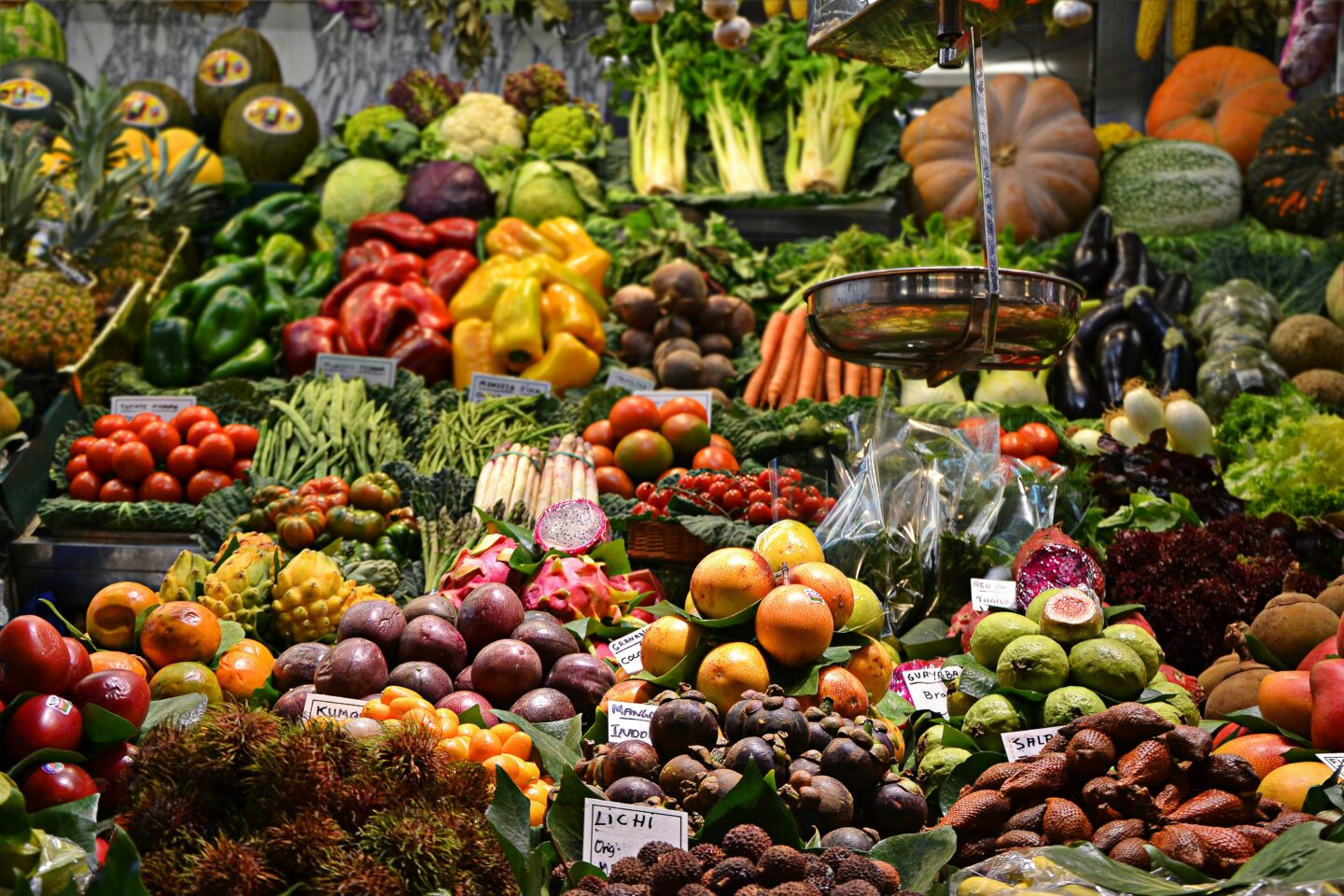
Here’s what we predict for 2024… what about you?
What can we expect to see over the coming year? IMD professors offer their expert predictions, and we invite you to join in....

by Carlos Cordon Published 31 January 2024 in 2024 trends • 7 min read
 What will 2024 bring for you and your business? IMD faculty and other experts offer their predictions for the year ahead.
What will 2024 bring for you and your business? IMD faculty and other experts offer their predictions for the year ahead.
Supply chain leaders have never had it so tough. COVID-19 caused unprecedented disruption, and was closely followed by Russia’s invasion of Ukraine, directly impacting raw materials supplies and driving an energy-price spike that sent inflation soaring around the globe.
This year, supply chain leaders will hope for some respite. However, with ongoing challenges and new ones on the horizon, there is a strong likelihood that they will be disappointed. Below, we look at five themes likely to be front of mind in 2024.
Producers and retailers worldwide had hoped that 2024 would see supply chains finally settle back into the stable routines of the pre-COVID-19 era. Unfortunately, the New Year has seen logistics costs spiral in light of military clashes in the Red Sea, a key global trade route.
The effects of such volatility will continue to reverberate throughout the global economy. While there is a widespread desire to return to a system where wholesalers and retailers agree prices for extended periods, this will continue to be a highly challenging area of the economy.
In France, for example, where the practice is to set food prices annually through a negotiation process, supermarket group Carrefour has had a set-to with (now former) supplier PepsiCo. As a result, Carrefour is refusing to stock PepsiCo’s products, describing the latter’s proposed price increases for 2024 as “unacceptable.” A similar row last year saw UK retailer Tesco pull Heinz products from its shelves.
Wholesalers argue that they need to protect themselves against ongoing volatility in their supply chains. Retailers insist they are seeking to protect consumers and that their own margins have already taken a substantial hit as a result.
A move towards more dynamic pricing looks like the only way through the morass. Wholesalers and retailers may have to accept shorter-term agreements on pricing, even if this favors neither party.

“This could be the year in which European consumers find themselves transported back to a time when out-of-season goods were not available from their local stores. ”
While inflation has eased markedly across much of Europe, consumers (and, in particular, families) are likely to see only partial respite at best. Millions of Europeans whose low-cost, fixed-rate mortgages are due to come to an end this year will see their monthly outgoings rise sharply when they are obliged to remortgage at a significantly higher rate.
Consumer-facing businesses will be impacted in many different ways, but the situation in the supermarket segment is of particular interest. There, many organizations are questioning the wisdom of recently introduced self-checkout machines. The roll-out of these machines has certainly reduced labor costs and may have had a positive effect in respect of consumer convenience, but self-checkout systems do present greater opportunities for theft.
Indeed, shrinkage rates in stores using self-checkout registers are more than 20 times’ higher than in those that exclusively use manually operated registers. When so many consumers are struggling financially, the temptation to discreetly omit to scan a few items going into the shopping bags, even for those who would never consider theft under normal circumstances, may be too strong to resist. Accidental theft, where shoppers unintentionally fail to scan goods properly, is also commonplace.
Ultimately, newer technology may provide the solution, with some stores now moving to a system where entire baskets and trolleys can be scanned in one go. In the meantime, some retailers are rowing back on self-checkout roll-outs.
This could be the year in which European consumers find themselves transported back to a time when out-of-season goods were not available from their local stores.
The shift away from extended supply chains, where any one of a multitude of moving parts could give retailers a pricing headache, militates against all-year-round availability. Many retailers may no longer be prepared to source goods from geographically distant producers.
Equally, the sustainability pendulum continues to swing. Environmental campaigners continue to attack retailers prepared to continue to leave a large carbon footprint by racking up food miles: food transport may now account for one-third of the sector’s greenhouse gas emissions. NGOs continue to worry about the labor market practices of suppliers based in developing countries worldwide.

Against this backdrop, some European supermarkets are increasingly wary of offering out-of-season products. Even where suppliers in countries such as Spain, which has invested hugely in greenhouse production, are able to bridge the gap, supermarkets in other markets worry about the potential backlash from customers unimpressed by goods they doubt have been locally produced.
In a tough economic environment, sales of retailers’ private-label products almost always rise at the expense of more costly brands. The current downturn is no exception, with private labels once again in the ascendancy – but this time around, there is a new dimension to the dynamic.
Increasingly, consumers do not regard private-label goods as inferior: 60% of European shoppers now regard them as of similarly high quality as branded products, according to research. Shoppers switching to private labels in search of a cost saving may end up sticking with these products if they feel there is little or no compromise in terms of quality, piling the pressure on brands that expected a reversion to the norm once pressure on consumers relented.
In 2024 we may start to see smaller brands disappearing for good – or at least offered for sale – as manufacturers decided their margins they are no longer sustainable and marketing costs too high.
Equally, demand for private-label production capacity will remain highly elevated. Retailers may not be able to source the supplies they need in the quantities required – and that means that supply chain costs will rise. There is already some evidence that private-label prices are rising more quickly than prices of branded goods.
Manufacturers in industries such as automotive and IT have a problem when it comes to Europe. They recognize the imperative to nearshore production – the pandemic exposed the weaknesses of complex global supply chains and over-dependence on China – but making that a reality presents practical difficulties.
In North America, Mexico offers an obvious low-cost base in close proximity to the all-important US market. In Europe, in contrast, picking the right site for a new plant is less clear-cut. High labor costs in the most developed markets are a deterrent, as are geopolitical uncertainties in peripheral locations.
In Eastern Europe, the shadow of the Ukraine crisis looms large. In Turkey, political risk continues to rise, and inflation is out of control. North African markets are fraught with difficulties, too.
Against this backdrop, Poland and Portugal are expected to be among the winners, with both countries battling hard to attract manufacturers contemplating a nearshoring strategy. But competition will be tough, prompting governments to intervene with incentives and even direct financial support.
In 2024 manufacturers, then, will have some decisions to make. What appear to be obvious solutions have hidden pitfalls that are only brought to light as market dynamics shift in unprecedented ways, suggesting that there will be an element of gambling and a requirement to accept trade-offs.

Professor of Strategy and Supply Chain Management
Carlos Cordon is a Professor of Strategy and Supply Chain Management. Professor Cordon’s areas of interest are digital value chains, supply and demand chain management, digital lean, and process management.

5 January 2024 • by Robert Hooijberg, Arturo Bris, David Bach, José Parra Moyano, Michael R. Wade, Julia Binder, Howard H. Yu, Simon J. Evenett, Alyson Meister, Salvatore Cantale, Stefan Michel in 2024 trends
What can we expect to see over the coming year? IMD professors offer their expert predictions, and we invite you to join in....

1 January 2024 • by Jean-François Manzoni, Michael D. Watkins, Susan Goldsworthy, Richard Roi, Katharina Lange, Jennifer Jordan, Alyson Meister, Winter Nie in 2024 trends
Unsurprisingly, most leaders are feeling the pressure right now. How can you lead for sustained success in a world of constant change? ...

31 December 2023 • by Michael R. Wade, Amit M. Joshi, Howard H. Yu, Simon J. Evenett, Johannes Fritz, Goutam Challagalla, Sarah E. Toms in 2024 trends
IMD’s professors and expert contributors shed light on key trends that will shape the technological landscape in the coming year....

30 December 2023 • by Richard Baldwin, Simon J. Evenett, Fernando Martín Espejo in 2024 trends
From a potential stabilization of US-China relations to a super election cycle, our experts discuss the factors that could smooth or disrupt trade flows in 2024. ...
Explore first person business intelligence from top minds curated for a global executive audience